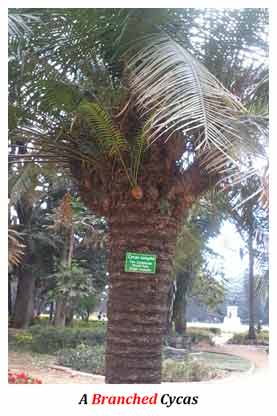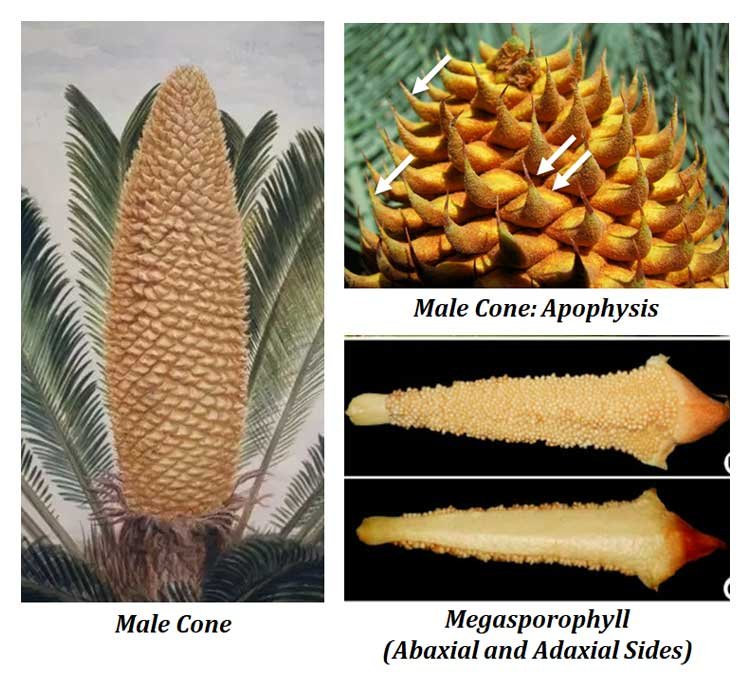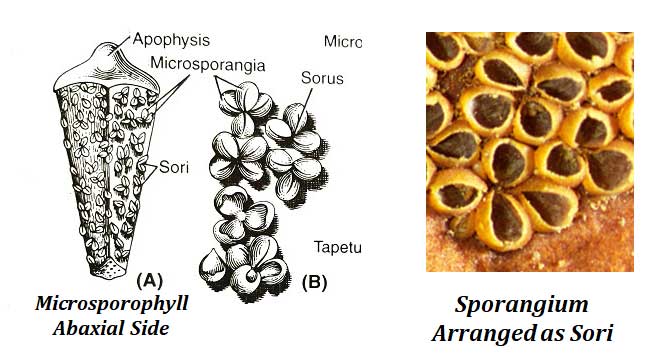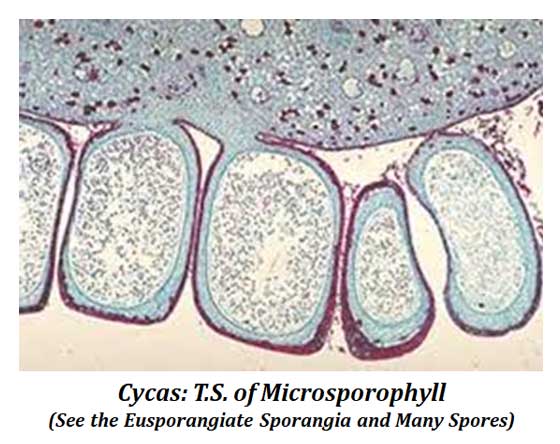Part – 5: Male Reproductive Structures
<<< Part 4 —- Part 6 >>>
This is the Part-5 of the Lecture Notes Series in Cycas. In the previous post we discussed the Morphology and Anatomy. Here, we will discuss the Reproduction of Cycas. In this post we will see the mode of reproduction in Cycas (vegetative and sexual reproduction), A detailed account on Sexual Reproduction in Cycas with Diagrams and Photographs, Structure of Male cone and Microsporophylls and Formation of Mocrosporangia and Microspores (Pollen Grains) are given.
Contents
$. Reproduction in Cycas
♦. Vegetative Reproduction
♦. Sexual Reproduction
$. Male Cone
$. Microsporophyll
$. Microsporangium
$. Megaspore (Pollen Grains)
Reproduction in Cycas
♦. Cycas reproduce by two methods:
-
- Vegetative Reproduction
- Sexual Reproduction
You may also like: Cycas PPT (Download)
(1). Vegetative Reproduction
♦. Vegetative reproduction in Cycas occurs through bulbils.
♦. Bulbils are developed from the crevices of the scales.
♦. These bulbils were with few scales and a foliage leaf.
♦. Detached bulbils can grow into a new plant and thus helps in the vegetative propagation of Cycas.
(2). Sexual Reproduction
♦. All Cycas species are dioecious.
♦. Dioecious: Male and female plants are separate
♦. Male plants produce microspores which are developed in microsporangia.
♦. Female plants produce megaspores which are developed in megasporangia.
♦. The megasporangia of gymnosperms are better known as ovules.
♦. Cones or strobili are formed on the apex of the plant
♦. The growth patterns in male and female plants are different
♦. In male, Cycas plants show Sympodial growth whereas female Cycas show Monopodial growth.
Cycas Male Cone
♦. Male stobili (cone) are produced at the apex of the stem (single cone at a time).
♦. The cone is erect and compact
♦. The cone consists of a cone axis and many microsporophylls.
♦. The microsporophylls are closely packed and spirally arranged on the cone axis.
♦. The sporophylls at the base and apex of the cone will be sterile.
Microsporophyll
♦. Each microsporophyll is narrow below and broad above.
♦. Microsporophyll terminates into a narrow projection called the apophysis.
♦. Microsporangia are located on the abaxial (lower) side of the microsporophyll.
♦. Upper surface of the microsporophyll is sterile.
♦. Sporophylls are covered by multicellular ramental hairs for protection.
Microsporangia
♦. The microsporangia occur on two flanks of the microsporophyll differentiated by a median sterile ridge.
♦. The sporangia are formed as groups or sori of 2 to 6 sporangia.
| You may also like NOTES in... | ||
|---|---|---|
| BOTANY | BIOCHEMISTRY | MOL. BIOLOGY |
| ZOOLOGY | MICROBIOLOGY | BIOSTATISTICS |
| ECOLOGY | IMMUNOLOGY | BIOTECHNOLOGY |
| GENETICS | EMBRYOLOGY | PHYSIOLOGY |
| EVOLUTION | BIOPHYSICS | BIOINFORMATICS |
♦. All the sporangia a sorus is united at the base.
♦. The sporangia developed from the hypodermal cells of the microsporophyll.
♦. The sporangial development in Cycas is Eusoporangiate type.
Learn more: Difference between Leptosporangia and Eusporangia
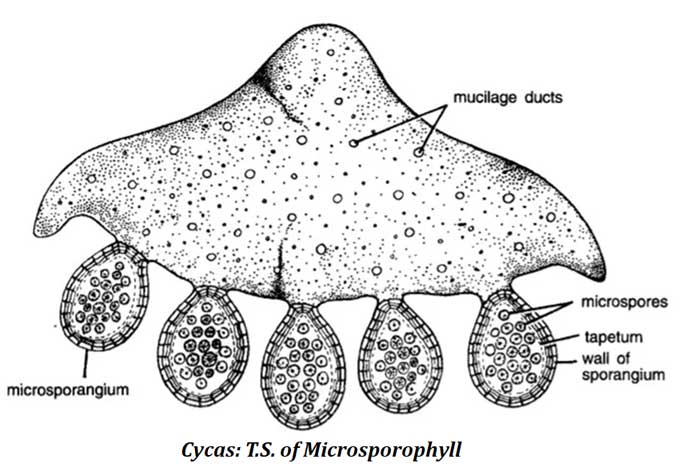
♦. The sporangial wall is multilayered with 4 to 7 layers of parenchymatous cells.
♦. Tapetum is present in the microsporangium.
♦. The tatetal layer is differentiated from the sporogenous tissue.
♦. The tapetum helps in the nourishment of spores.
Microspores / Pollen Grains
♦. Microspores in Gymnosperms are better called pollen grains.
♦. The sporogenous tissue (spore mother cells) inside the sporangium is the last stage of the sporophytic generation
♦. Each spore mother cells divide meiotically to produce four haploid microspores (pollen grains)
♦. Mature microspores are with two wall layers Exine and Intine. Intine is relatively thin whereas exine is thick and ornamented.
♦. Numerous microspores are produced per sporangia
♦. Microspores germinate in situ (germination within the microsporangia, at the time of pollination, nuclear division has already taken place).
♦. Microsporangial wall breaks and the pollen grains are liberated and they are dispersed through the wind.
♦. In the next post, we will discuss the female strobili in Cycas and its structure.
<<< Cycas Part 4 —– Part 6 >>>
| You may also like... | ||
|---|---|---|
| NOTES | QUESTION BANK | COMPETITIVE EXAMS. |
| PPTs | UNIVERSITY EXAMS | DIFFERENCE BETWEEN.. |
| MCQs | PLUS ONE BIOLOGY | NEWS & JOBS |
| MOCK TESTS | PLUS TWO BIOLOGY | PRACTICAL |

